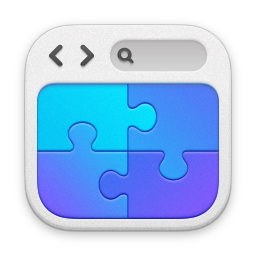Self Published Books
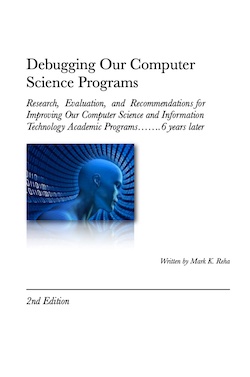
"Debugging Our Computer Science Programs” (ISBN 978-0-359-75286-7 for eBook and ISBN 978-0-359-74533-3 for paperback)
What could academia learn by studying our current software development teams already working professionally in corporate software engineering and Information Technology companies? What could academia learn from our recent college and university Computer Science graduates? Could academia use this information to identify gaps and provide constructive feedback to our colleges and universities to improve the quality of our education programs? The action research project provided research data to answer these questions. The research completed helped debug our Computer Science and Information technology programs.
What could academia learn by studying our current software development teams already working professionally in corporate software engineering and Information Technology companies? What could academia learn from our recent college and university Computer Science graduates? Could academia use this information to identify gaps and provide constructive feedback to our colleges and universities to improve the quality of our education programs? The action research project provided research data to answer these questions. The research completed helped debug our Computer Science and Information technology programs.
Peer Reviewed Journal Articles
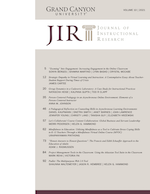
Reha.M, Fai.Victoria - “Project Management Tools in the Classroom” Journal of Instructional Research, Volume 10, 2021
Students are pressed for time, struggle to manage their time, and often do not have the training and tools to help them out. Are there some cost-effective tools that could be used by both faculty and students to help solve this problem? This paper documents the results of analyzing one such tool that could be used in the classroom to help students solve this problem especially for complex and lengthy courses. The Atlassian Tool Suite is analyzed as a project management tool to help students complete their Senior Capstone Project in an undergraduate program in Software Design and Development at a major university in the United States. Both the student perspective and the instructor perspective on using the Atlassian Tool Suite are explored. The benefits of using the Atlassian Tool Suite for students and the university are presented and recommendations for integrating the Atlassian Tool Suite into the classroom are given at the end.
Students are pressed for time, struggle to manage their time, and often do not have the training and tools to help them out. Are there some cost-effective tools that could be used by both faculty and students to help solve this problem? This paper documents the results of analyzing one such tool that could be used in the classroom to help students solve this problem especially for complex and lengthy courses. The Atlassian Tool Suite is analyzed as a project management tool to help students complete their Senior Capstone Project in an undergraduate program in Software Design and Development at a major university in the United States. Both the student perspective and the instructor perspective on using the Atlassian Tool Suite are explored. The benefits of using the Atlassian Tool Suite for students and the university are presented and recommendations for integrating the Atlassian Tool Suite into the classroom are given at the end.
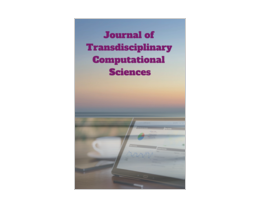
Reha.M, “Raspberry Pi vs. Arduino - Development Showdown” Journal of Trans-disciplinary Computational Sciences, Volume 1, 2020 (E-ISSN:2643-0290)
This paper is in response to observations I made while developing a simple Internet of Things (IoT) application using both a Raspberry Pi 3 B+ and an Arduino Uno WiFi. Comparisons and
contrasts will be made of the development experiences, challenges, and some recommendations will be made for students and developers who may be considering embedded systems development using the Raspberry Pi and/or the Arduino embedded platforms. Students or developers who are starting a new embedded systems project, and considering either of these embedded systems platforms, can use this paper as guidance before starting their project. The guidance provided in this paper can be used to assist them in selecting either a Raspberry Pi or Arduino platform for their project. The platform selection criteria outline in this paper is based on the following criteria: the development environment, the programming language, the quality of documentation, the ease of application development, and the potential cost of the solution.
This paper is in response to observations I made while developing a simple Internet of Things (IoT) application using both a Raspberry Pi 3 B+ and an Arduino Uno WiFi. Comparisons and
contrasts will be made of the development experiences, challenges, and some recommendations will be made for students and developers who may be considering embedded systems development using the Raspberry Pi and/or the Arduino embedded platforms. Students or developers who are starting a new embedded systems project, and considering either of these embedded systems platforms, can use this paper as guidance before starting their project. The guidance provided in this paper can be used to assist them in selecting either a Raspberry Pi or Arduino platform for their project. The platform selection criteria outline in this paper is based on the following criteria: the development environment, the programming language, the quality of documentation, the ease of application development, and the potential cost of the solution.
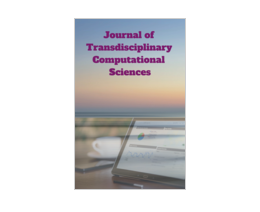
Reha.M. “Getting Started in Embedded Systems - A Student Guide” Journal of Trans-disciplinary Computational Sciences, Volume 1, 2020 (E-ISSN:2643-0290)
This paper is a guide for instructors to help them effectively design an introductory level embedded systems course and offers suggestions for teaching embedded systems. This paper will first introduce the reader to what an embedded systems is and then the author will use an actual embedded systems board to provide a real-world example of what a development environment looks like, what tools are used, and then discuss the programming languages used in embedded systems development. Finally, a curriculum design with an example hands-on lab, are presented providing new instructors with fresh ideas for what would be found in a modern well design embedded systems course. This paper can also be used as a guide for students who want to know a little more about the field of Embedded Systems and what is involved in learning the development and programming environment.
This paper is a guide for instructors to help them effectively design an introductory level embedded systems course and offers suggestions for teaching embedded systems. This paper will first introduce the reader to what an embedded systems is and then the author will use an actual embedded systems board to provide a real-world example of what a development environment looks like, what tools are used, and then discuss the programming languages used in embedded systems development. Finally, a curriculum design with an example hands-on lab, are presented providing new instructors with fresh ideas for what would be found in a modern well design embedded systems course. This paper can also be used as a guide for students who want to know a little more about the field of Embedded Systems and what is involved in learning the development and programming environment.
